COLLECTIVE BEHAVIOR AND THE
SOCIAL PSYCHOLOGIES OF SOCIAL INSTITUTIONS
 Here
we will consider the most "macro" dimensions of social psychology, those social
forces arising out of the interactions of large numbers of individuals and
groups which, in turn, are the master templates patterning the cultural and
social orders. One cannot study the behaviors of individuals without devoting
some attention to the broader socio-cultural environments--their economic
structures, stratification orders, technological systems of communication and
transportation, family processes, demographics, and value systems-- structuring
their social lives.
Here
we will consider the most "macro" dimensions of social psychology, those social
forces arising out of the interactions of large numbers of individuals and
groups which, in turn, are the master templates patterning the cultural and
social orders. One cannot study the behaviors of individuals without devoting
some attention to the broader socio-cultural environments--their economic
structures, stratification orders, technological systems of communication and
transportation, family processes, demographics, and value systems-- structuring
their social lives.
Humans have long been fascinated by the processes through which
collective social wholes emerge out of individuals' separate activities.
They have probably forever felt the sense of exhilaration and power of their
unity in numbers when pressed into crowds. The whole is greater than the sum of its parts in the image on the left. In this 1947 photograph
by E.O. Goldbeck, 21,765 members of the U.S. Army Air Force are fused into a
symbol of their group.
COLLECTIVE BEHAVIOR
AND SOCIAL
MOVEMENTS
By "collective behavior" social scientists
typically mean that realm of action not governed by the everyday rules and
expectations which normally shape social behavior:
Besides being large-scale social phenomena, sociologists' interest in their genesis and
development stem from the fact that they are major engines of social
change.
 Collective action can be understood as the result of an
emerging collective definition of the situation.
This definition includes elements of shared cognitive belief (the "facts" that are
commonly defined as being real and relevant), emotional factors (such as the
personal needs being frustrated and the dominant emotion evoked), and the predominant
motivation of those present. How such a commonly-shared mindset
comes to be gets us into such topics as how information flows through social
networks (recall Stanley Milgram's "Small World" thesis, recently
mathematically
verified, that we are no more than six steps removed from any other person
on earth?) and connectivity opportunities provided by email and the
Web (also being explored in James Moody's Electronic
Small World Project and at Columbia University's Small World Research
Project).
Collective action can be understood as the result of an
emerging collective definition of the situation.
This definition includes elements of shared cognitive belief (the "facts" that are
commonly defined as being real and relevant), emotional factors (such as the
personal needs being frustrated and the dominant emotion evoked), and the predominant
motivation of those present. How such a commonly-shared mindset
comes to be gets us into such topics as how information flows through social
networks (recall Stanley Milgram's "Small World" thesis, recently
mathematically
verified, that we are no more than six steps removed from any other person
on earth?) and connectivity opportunities provided by email and the
Web (also being explored in James Moody's Electronic
Small World Project and at Columbia University's Small World Research
Project).
A century ago one of the first social science
investigations of collective action focused on the behavior of crowds. Gustave LeBon, in
 The Crowd: A Study of the Popular Mind (1897), wrote of
the "crowd mind," emerging from anonymity and deindividuation (which often leads to
antisocial behavior), contagion (e.g., epidemic
hysteria, a variant of Functional Somatic Syndromes),
convergence (such as the Seattle
windshield pitting epidemic of 1954), and emergent norms.
Though contemporary social scientists have dismissed LeBon's "crowd mind," his antecedents
continue to influence social research. Indeed, individuals (whether crowd members or
observers) frequently act on the basis of their inferences about what the crowd "thinks, fears,
hates, and wants."
The Crowd: A Study of the Popular Mind (1897), wrote of
the "crowd mind," emerging from anonymity and deindividuation (which often leads to
antisocial behavior), contagion (e.g., epidemic
hysteria, a variant of Functional Somatic Syndromes),
convergence (such as the Seattle
windshield pitting epidemic of 1954), and emergent norms.
Though contemporary social scientists have dismissed LeBon's "crowd mind," his antecedents
continue to influence social research. Indeed, individuals (whether crowd members or
observers) frequently act on the basis of their inferences about what the crowd "thinks, fears,
hates, and wants."
The crowds that go mad--such as the 1921
Tulsa race riot (see also The
Nation's
story of events)--have long intrigued social scientists. (See Tony
Perez's Annotated
Bibliography on Riots and Protest.) These
intensely emotional mobs that violate the social norms and values have been both
agents of social change and targets of severe repression by agencies of social
control. Participants, anonymous and deindividualized and hypersensitive
to any emergent definition of the situation, may find themselves engaging in
acts of wanton destruction that they never envisioned nor intended.
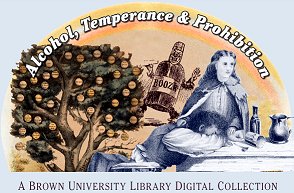 Being major agents of social change, perhaps the
most-studied forms of collective behavior are social movements, such as the
American civil rights, anti-war, feminist, and environmental
crusades of recent
decades. These can arise, for instance, when cultural values become ambiguous
during times of social change or crisis, when people find themselves in
unanticipated situations, or when individuals' motives are similarly blocked. Such are the
occasions when novel shared definitions of the situation arise and a collectivity is formed,
experiences solidarity, and mobilizes for action.
Being major agents of social change, perhaps the
most-studied forms of collective behavior are social movements, such as the
American civil rights, anti-war, feminist, and environmental
crusades of recent
decades. These can arise, for instance, when cultural values become ambiguous
during times of social change or crisis, when people find themselves in
unanticipated situations, or when individuals' motives are similarly blocked. Such are the
occasions when novel shared definitions of the situation arise and a collectivity is formed,
experiences solidarity, and mobilizes for action.
Precisely how such collective action arises has likewise
received considerable theory and research. Neal Smelser, for instance,
develops such processes as:
- structural strain
- structural conduciveness
- generalized belief
- some precipitating factor
- mobilization of participants for action
- success or failure of social control mechanisms
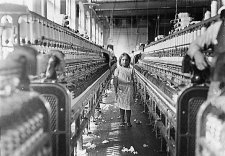
A rich topic for research is the role of the photographer in triggering social movements.
Consider the role, for instance, of Lewis H. Hine is bringing about reform in child labor laws.
- Women
and Social Movements in the United States, 1775-1940 by Thomas Dublin &
Kathryn Kish Sklar (SUNY Binghamton)
- ASA
Section on Collective Behavior and Social Movements
- The American Social Movement Cultures (Washington State)
- Richard Kimber's
Political Parties, Interest Groups, and Other Social Movements (broken down by nation)
- Protest.Net--discover where protests are percolating across the U.S. and internationally
- WTO History Project,
from the University of Washington with a focus on the 1999 Seattle protests
- Lorry Britt
& David Heise, "From Shame to Pride in Identity Politics"
-
Kenneth Andres & Michael Biggs, "The Dynamics of Protest Diffusion: The 1960 Sit-In Movement in the American South"
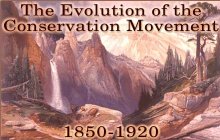
- Nathan
Wolfson on the structural preconditions for anti-semitic mobilization
- Yahoo's social movements directory
- Prohibition
Materials
-
Underlying Causes of the LA Riots--Listserv Archive from the Hubert H. Humphrey Institute
of Public Affairs
- Pro-Life and
Pro-Choice Movements in the Abortion debate

INSTITUTIONAL PSYCHOLOGIES
Institutions are perceptual, cognitive, emotive and
behavioral systems--conventional domains of "you knows." As grammar
allows one to make sense of a string of words, so institutions provide
individuals with consensual ways for deriving meaning from their social
interactions. They also provide individuals routine ways for making decisions
and acting in various situations with various types of others. As Mary
Douglas observes in How Institutions Think (Syracuse University
Press, 1986:102), "the instituted community blocks personal curiosity,
organizes public memory, and heroically imposes certainty on uncertainty.
In marking its own boundaries it affects all lower level thinking, so that
persons realize their own identities and classify each other through community
affiliation."
 From a more social perspective, institutions are social
housekeepers in that they program the routine services necessary for the
day-to-day functioning of the group. With social evolution, distinctive
institutions emerged to address the separate needs of society. For instance,
out of society's need for protection against external threats arose the
military; out of the social need for an informed and trained citizenry
emerged education; and out of the social need for moral consensus and restraint
of selfish impulses arose religion. Ideally these social needs addressed
simultaneously address the needs of individuals, such as the social need
for procreating the next generation of members matching the personal needs
for intimacy and connectedness in the institution of the family.
From a more social perspective, institutions are social
housekeepers in that they program the routine services necessary for the
day-to-day functioning of the group. With social evolution, distinctive
institutions emerged to address the separate needs of society. For instance,
out of society's need for protection against external threats arose the
military; out of the social need for an informed and trained citizenry
emerged education; and out of the social need for moral consensus and restraint
of selfish impulses arose religion. Ideally these social needs addressed
simultaneously address the needs of individuals, such as the social need
for procreating the next generation of members matching the personal needs
for intimacy and connectedness in the institution of the family.
From this social psychological perspective, the
methodological
tasks are to measure the way a given institution
- addresses the needs of both individuals and social
systems;
- shapes perception, beliefs, and cognition;
- induces various emotional experiences, such as the
feelings of awe and respect, love and hate;
- creates its own language, concepts, and metaphors;
- impacts identity: the bearing of its roles on the
self-concepts and esteem of its actors, its rites-of-passages, its demands
for biographical summaries and accountabilities;
- defines situations and creates settings for interaction;
- channels behavior, such as its encouragement of
risk-taking
or pro-social activities, restraint on sexual activity, or timing of activities;
- creates group dynamics, such as creating in-groups
and out-groups, and specifying roles for leaders and followers, and groupthink;
- spawns collective action and social movements;
- relates to other institutional systems of action and
thought.
To illustrate how institutions "work" consider the act of driving a car.
With these point in mind, consider the following findings
from "The Diminishing Divide-- American Churches, American Politics"
by The Pew Research Center For the
People and the Press. In several national surveys (the last conducted
in April 1996), Americans were asked for their views on the following
issues:
- The death penalty for persons convicted of murder.
(CAPPUN)
- President Clinton's decision to send 20,000 U.S. troops
to Bosnia as part of an international peacekeeping force. (BOSNIA)
- Allowing gays and lesbians to marry legally. (HOMO
MARR)
- Which comes closer to your view? Abortion should be
generally available, ... but under stricter limits, ... against the law
except in cases of rape, incest, and to save the woman's life,... not permitted
at all. (ABORTION)
- Which comes closer to your view? The government should
do more to help needy Americans even if it means going deeper in debt.
The government today can't afford to do much more to help the needy. (GOVPOOR)
- Which comes closer to your view? This country should
do whatever it takes to protect the environment. This country has gone
too far in its efforts to protect the environment. (ENVIRON)
- Which comes closer to your view? Society has been
improved because women are now represented in the work place. Society made
a mistake in encouraging so many women with families to work. (WORKING
WOMEN)
For each issue respondents were also asked "Which
one of the following has had the biggest influence on your thinking on
this issue: 1) a personal experience; 2) the views of your friends and
family; 3) what you have seen or read in the media; 4) your religious beliefs;
5) your education; or 6) something else. Below, for each issue, are the
percentages of individuals reporting each influence to be the largest.
| ISSUE |
PERSONAL EXPERIENCE |
FRIENDS/FAMILY |
MEDIA |
RELIGION |
EDUCATION |
OTHER |
| CAPPUN |
13 |
6 |
21 |
18 |
21 |
18 |
| BOSNIA |
15 |
7 |
35 |
6 |
18 |
16 |
| HOMO MARR |
10 |
7 |
9 |
37 |
17 |
17 |
| ABORTION |
18 |
7 |
7 |
28 |
22 |
16 |
| GOVPOOR |
26 |
7 |
22 |
6 |
24 |
13 |
| ENVIRON |
22 |
3 |
24 |
3 |
36 |
10 |
| WORKING WOMEN |
45 |
8 |
7 |
4 |
23 |
11 |
As can be seen, for only two of the seven issues were
Americans' attitudes most influenced by personal experiences. The media,
for instance, was the greatest influencer of orientations toward capital
punishment and America's Bosnia interventions, while religion was the greatest
shaper of opinions toward homosexual marriages and abortion.
To more easily gauge the relative influence of these
various sources of opinion we can standardize each row, dividing each percentage
by the largest percentage therewithin. For instance, 28 percent of Americans
claimed that religion was the greatest shaper of their opinions toward
abortion. Dividing each percentage in this row by .28 we find that Americans
are only one-quarter as likely to cite the media (and the views of family
and friends) as they are to cite religion as the greatest influence on
their abortion attitudes.
| ISSUE |
PERSONAL EXPERIENCE |
FRIENDS/FAMILY |
MEDIA |
RELIGION |
EDUCATION |
OTHER |
| CAPPUN |
.62 |
.29 |
1.0 |
.86 |
1.0 |
.86 |
| BOSNIA |
.43 |
.20 |
1.0 |
.17 |
.51 |
.46 |
| HOMO MARR |
.27 |
.19 |
.24 |
1.0 |
.46 |
.46 |
| ABORTION |
.64 |
.25 |
.25 |
1.0 |
.79 |
.57 |
| GOVPOOR |
1.0 |
.27 |
.85 |
.23 |
.92 |
.50 |
| ENVIRON |
.61 |
.08 |
.67 |
.08 |
1.0 |
.28 |
| WORKING WOMEN |
1.0 |
.18 |
.16 |
.09 |
.51 |
.24 |
| MEAN INFLUENCE |
.65 |
.21 |
.60 |
.49 |
.74 |
.48 |
Reflecting on the "Mean Influence" row on
the bottom, the institutional bearing of Americans' attitudes and values
cannot be denied. The concerns of critics of the messages delivered by
mass media and educational curricula appear well-grounded as the influence
of these two institutions rival that of personal experience.

THE
SOCIAL
PSYCHOLOGY OF INEQUALITY
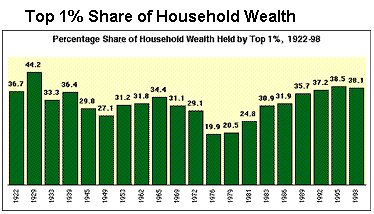
inequality among men [is] a rich source of much that
is evil, but also of everything that is good.
--Kant
Consider the concept of "The American
Dream":
the expectation of achieving a higher standard of living than one's parents.
Has this expectation changed historically? Has it changed historically
more so for some groups--social classes, minorities, or women--than for
others (or might the notion historically referred only to the condition
of white middle- class males)? What are the social psychological implications
of not holding this belief?
Individuals' positions in the stratification orders
of sex, race, and
social
class determine the language the speak, their values, happiness, self-esteem,
sense of personal efficacy, physical and mental health, rate of aging and
life-expectancy, sexual activities, childrearing practices, and nature
of their work.
THOUGHT PROBLEM
Suppose that you are a member of a dominant group.
What social psychological tactics would you use to ensure that your "social
lessers" remain in their place?
EXPLORING AMERICANS' ATTRIBUTIONS OF WHY THE POOR ARE
POOR
In the 1990 NORC General Social Survey, Americans were
asked why there are poor people in this country. Two questions dealt with
internal loci of control (e.g., they blame the victims): People
are poor because of: Loose morals and drunkenness, and Lack of effort by
the poor themselves. Two deal with external loci (e.g., they locate
the cause in society): Failure of society to provide good schools for many
Americans, and Failure of industry to provide enough jobs. Out of these
questions was created a scale of poverty attributions, where 1=society's
fault, 2=both social and personal faults, and 3=self-fault. Not surprisingly,
those identifying themselves as members of the lower class are most likely
to see poverty being society's fault (43%) than are the other classes,
but there is virtually no difference in attributions of the working, middle,
and upper classes (27% of whom blame society). Women are slightly more
to blame society (30%) than men (26%), as are those 18-29 years of age
(32%) compared to those 70 and older (19%).
Click to see:
Related resources:
- T.R. Young's "The Contributions of Karl
Marx to Social Psychology"
- Dimostenis
Yagcioglu's "Psychological Explanations of Conflicts Between Ethnocultural
Minorities and Majorities"
- Explorations in Social Inequality

THE SOCIAL PSYCHOLOGY OF
RELIGION

Decency is veiled from sight; indecency is exposed
to view. Scenes of evil attract packed audiences; good words scaredly find
any listeners. It is as if purity should provoke a blush, and corruption
give ground for pride. But where else should this happen but in devils'
temples, in the resorts of delusion?
--St.
Augustine
 According to a 1995
Gallup Survey, virtually all Americans (96%) say they believe in God
or a universal spirit, and most Americans (88%) say religion is important
in their lives. Certainly any description of American
Exceptionalism must include Americans' profound religiosity and their
faith in the existence of an afterlife. To see how your personal beliefs match up with those of twenty-six
world religions try the Religion
Selector by SelectSmart.com and SpeakOut.com.
According to a 1995
Gallup Survey, virtually all Americans (96%) say they believe in God
or a universal spirit, and most Americans (88%) say religion is important
in their lives. Certainly any description of American
Exceptionalism must include Americans' profound religiosity and their
faith in the existence of an afterlife. To see how your personal beliefs match up with those of twenty-six
world religions try the Religion
Selector by SelectSmart.com and SpeakOut.com.
RELIGION'S ROLE IN ADDRESSING THE NEEDS OF
SELF AND SOCIETY
 In numerous ways, religion acts as a shock absorber
that cushions the inevitable tensions between self and society. Social
frustrations must be resolved; the incongruities between personal desires
and social needs must be explained. Social order may well require individuals' absolute faith in
the order, meaningfulness, and justice of social life. Religious faith is a potent source of
human motivation, whether directed toward orthodoxy or
fanaticism.
In numerous ways, religion acts as a shock absorber
that cushions the inevitable tensions between self and society. Social
frustrations must be resolved; the incongruities between personal desires
and social needs must be explained. Social order may well require individuals' absolute faith in
the order, meaningfulness, and justice of social life. Religious faith is a potent source of
human motivation, whether directed toward orthodoxy or
fanaticism.
Considering the needs of
selves and societies addressed by religion, let's first investigate the extent
to which religiosity contributes to the happiness of individuals.
As can be seen, when controlling for Americans' age and
education, those who report being "strongly" religious are
significantly more likely
to be "very happy" than are their less religious counterparts--
particularly among those 18-30 and those 45-64 years of age.
In addition to emotional health, religion contributes to
physical well-being as well, evidenced by Mormons' prohibitions against alcohol, tobacco and
caffeine. In the October 1997 issue of The International Journal of Psychiatry in
Medicine is reported a study by Harold Koenig and Harvey Cohen of 1,718 older North
Carolinians. They found that those who attended religious services at least once a week were
significantly less likely to have high levels of interleukin-6, an immune-system protein
implicated with a number of diseases, in their bloodstreams. Perhaps it should not be
surprising that one-quarter of Americans report using prayer as a form of health care. For
other studies, check out The National Institute for
Healthcare Research ("Bridging the Gap Between Spirituality and Health").
Click here to see influence
of religion on Americans' outlooks toward science and belief in the theory of evolution.
 It is in society's interest that individuals voluntarily
become involved in its groups and organizations, particularly in a democratic
society such as ours. Being so "plugged into" the social order
not only keeps individuals out of mischief but intertwines personal motivations
with group objectives. Over the years, the NORC General Social Surveys
have asked Americans if they are members of fraternal groups, service clubs,
political clubs, school service groups, farm organizations, professional
societies, and the like. As can be seen, even
when controlling for age and education, religiosity significantly increases
the likelihood of individuals belonging to four or more of the sixteen
groups inquired of--particularly for those with at least some post-secondary
education. And, as developed elsewhere,
religiosity is significantly related to volunteerism.
It is in society's interest that individuals voluntarily
become involved in its groups and organizations, particularly in a democratic
society such as ours. Being so "plugged into" the social order
not only keeps individuals out of mischief but intertwines personal motivations
with group objectives. Over the years, the NORC General Social Surveys
have asked Americans if they are members of fraternal groups, service clubs,
political clubs, school service groups, farm organizations, professional
societies, and the like. As can be seen, even
when controlling for age and education, religiosity significantly increases
the likelihood of individuals belonging to four or more of the sixteen
groups inquired of--particularly for those with at least some post-secondary
education. And, as developed elsewhere,
religiosity is significantly related to volunteerism.
 For instance, strongly religious individuals
were found to be two-thirds more likely (45% vs. 27%) to have volunteered for two or more
causes over the previous year. This religiosity effect is most pronounced among the most highly
educated: among those with four or more years of college (who were three times more likely
than high school dropouts to be high volunteers), the strongly religious were three-quarters
more likely (71% vs. 45%) to have volunteered for two or more causes.
For instance, strongly religious individuals
were found to be two-thirds more likely (45% vs. 27%) to have volunteered for two or more
causes over the previous year. This religiosity effect is most pronounced among the most highly
educated: among those with four or more years of college (who were three times more likely
than high school dropouts to be high volunteers), the strongly religious were three-quarters
more likely (71% vs. 45%) to have volunteered for two or more causes.
- From the Independent Sector and the
National Council of Churches:
Faith and Philanthropy: The Connection Between Charitable Behavior and Giving to Religion (2002)
RELIGION'S ROLE IN SHAPING AMERICANS' MORAL
OUTLOOKS
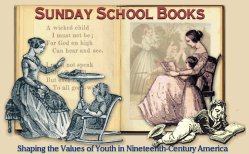 Click here to see religion's role in shaping Americans'
attitudes toward some of the moral issues of our times:
Click here to see religion's role in shaping Americans'
attitudes toward some of the moral issues of our times:
- Michael
Nielson's Psychology of Religion Page, including full text of William James's
The Varieties of
Religious Experience
- Diana Eck's (Harvard) The Pluralism
Project

- The American Religious
Experience Project, a consortium of UWV, UNC, LA State, AZ State,
Barnard-Columbia, and Franklin and Marshall
- Religion Online--over 900 articles
& chapters by religious scholars
- From PEW/Public Agenda "For Goodness Sake"
--a survey released in 2003 finding the American public strongly equates religion with
personal ethics and views faith as an antidote to the nation's moral problems
- Rutgers Anthropology/Sociology of Religion links
- Adherents.com statistics galore on over 4000 religions
- Hartford Institute for
Religion Research

- Jeffrey Hadden's New Religious
Movements Page
- American Religion Data Archive (Purdue):
downloadable files in ASCII, SPSS, and MicroCase formats, with such studies as "Anti-Semitism
in the U.S., 1981"
- Beliefnet.com--"We all believe in something."

- The Pluralism Project--"Our mission is to help Americans engage with the realities of
religious diversity through research, outreach, and the active
dissemination of resources."
- Religion & Ethics Newsweekly
- Weberian
Sociology of Religion
RELIGION AS ANTIDOTE TO ANOMIE AND PERCEIVED CRISES OF
MORALITY
- Briane
Turley's American Religion Links
- Case study: American Guardian: "America's Frontline Defense
Against Perversion"
- Ronald
Fagan on religion's role in restraining excessive individualism in Habits
of the Heart
RELIGION AS ANTIDOTE TO CRISES OF THE LIFESPAN
- UCLA's Higher Education Research Institute's National Study of
of College Students' Search for Meaning and Purpose--results of the 2004 survey of more than 112,000
students from 236 colleges
RELIGION AS MECHANISM OF OPPRESSION AND LEGITIMATOR OF VIOLENCE
- Donald G. Mathews, "The Southern Rite of Human Sacrifice" in
The Journal of Southern Religion
THE SOCIAL PSYCHOLOGY OF
CULTS

THE SOCIAL PSYCHOLOGY OF WORK
AND LEISURE
 When people meet for the first time, a question that
invariably arises is, "What do you do for a living?" We believe
that to know another person's line of work is to have a highly predictive
framework for inferring his or her social status, interpersonal traits
and skills, value orientations, personal interests, and even personality
type. So central is work to establishing one's social that King John of
England proclaimed that people must use surnames pertaining to their trade.
As populations were growing rapidly and the social system was becoming
increasingly specialized, it was no longer practical to refer to others
by their first names (even when coupled with one's residence, such as Edward-of-Dover).
What better way to index other selves than by what they do? Those who made
carts became Cartwrights and Wainwrights; metal workers became Smiths;
and Shepard became the surname of people who tended sheep.
When people meet for the first time, a question that
invariably arises is, "What do you do for a living?" We believe
that to know another person's line of work is to have a highly predictive
framework for inferring his or her social status, interpersonal traits
and skills, value orientations, personal interests, and even personality
type. So central is work to establishing one's social that King John of
England proclaimed that people must use surnames pertaining to their trade.
As populations were growing rapidly and the social system was becoming
increasingly specialized, it was no longer practical to refer to others
by their first names (even when coupled with one's residence, such as Edward-of-Dover).
What better way to index other selves than by what they do? Those who made
carts became Cartwrights and Wainwrights; metal workers became Smiths;
and Shepard became the surname of people who tended sheep.
 Of all the institutionalized arenas of human activity,
work is the most central, both sociologically and psychologically. From
a macro perspective, work is a way of keeping social actors "out of
mischief" by harnessing and coordinating their energies to produce
socially necessary goods and services. The products of work become the
basis of trade, which brings cultures into contact with each other, thereby
providing opportunities for social innovation.
Of all the institutionalized arenas of human activity,
work is the most central, both sociologically and psychologically. From
a macro perspective, work is a way of keeping social actors "out of
mischief" by harnessing and coordinating their energies to produce
socially necessary goods and services. The products of work become the
basis of trade, which brings cultures into contact with each other, thereby
providing opportunities for social innovation.
From a micro perspective, work satisfies a broad spectrum
of individual needs, such as the needs for solidarity and a feeling of
self-worth. One way to appreciate this function of is to study those who
lack it: the unemployed and unemployable, those who have been fired and
laid off, and retired people. In many ways these individuals become nonpersons;
their activities are no longer perceived as wholly legitimate, since only
through working is one generally seen as contributing to the social system.
The centrality to individuals' needs is further evidenced by the movements
for equal opportunity for women and minorities.
Topic ideas in the social psychology of work:
- professional argots and jargon
(e.g., legalese, bureaucratese)
- how do organizations harness worker loyalties?
- the centrality of work role to individuals' identities and lives
- the connection between work satisfactions and overall happiness
with life--and how this varies across societies, the lifespan, and between
the sexes
- what does "success" in work mean to individuals? (e.g.,
income, respect and recognition of superiors and/or peers, having control
over work content and schedules, etc.)
- what kinds of selves are spawned by capitalism vs. socialism?
- distributive justice and workplace ethics; see Public Agenda's 2004
study "A
Few Bad Apples? An Exploratory Look at What Typical Americans Think about
Business Ethics Today"
- the impacts of retirement
on identity
- the bifurcated work-self/private-self. In 1990s there emerged what was known as the
California
self,
a new Dr. Jekyll and Mr. Hyde: the corporate dictator who morphs
into a loving parent and hospice volunteer
- Economic
Beliefs
and Behaviour--downloadable discussion papers
- How did the Wall Street Crash of 1929 occur? Play the market with
this interactive simulation.
- Eva Bertram and Kenneth
Sharpe's "Capitalism, Work and Character"
- Robert Merton's
"Bureaucratic Structure and Personality"
- David Blanchflower and Andrew Oswald, "Well-being, Insecurity, and the Decline of American Job Satisfaction" (1999, pdf format)
- The Temporalities of
Work and Leisure
INDUSTRIAL PSYCHOLOGY
- Working papers from the
Center for Advanced Human Resource Studies at Cornell's School of Industrial and Labor
Relations
- The Society for Industrial and Organizational
Psychologist
- Journal
of Applied Behavior Analysis
CONSUMERISM
P.S. It is my observation that too many of us are spending
money we haven't earned to buy things we don't need to impress people we
don't like.
--H. Jackson Brown's mother (from "P.S. I Love
You")
 During the winter of '94-95 throughout the Midwest there
appeared the following
mall advertisement: "Shop like you mean it." What does this supposed
to mean?
During the winter of '94-95 throughout the Midwest there
appeared the following
mall advertisement: "Shop like you mean it." What does this supposed
to mean?
The mass production wrought by industrialization required
mass consumption, which brings us to the social psychology of materialism
and abundance. How are individuals socialized and conditioned to consume? One
place is in the schools. Check out Arizona State University's
Commercialism in Education
Research Unit, the Center
for Commercial-Free Public Education, and
Schools Inc. from
PBS's NOW.

-
Collection of articles and essays on advertising
- Mass consumerism requires a buy-now-pay-later mindset. Check out PBS Frontline's
Secret History of the Credit Card
- Temples of Consumption: Shopping Malls as Secular
Cathedrals, an essay written with Beth Gill
- "Identity and Desire in Consumption:
Interactions between Industry and Consumers by the Use of Commodities", by Mineo Hattori (1997)

-
Inconspicuous consumption: the sociology of
consumption and the environment, by Elizabeth Shove and Alan Warde
- Don
Slater's "Researching Consumer Cultures" page (with sizable
bibliography)
- Signaler "Analyzing
commercials and advertisements. How products get their meaning and the way
they signify."
- Richard Taflinger's Taking
ADvantage
- John
W. Hartman Center for Sales, Advertising, and Marketing History
- Celebrating 75 Years of Supermarkets: 1930-2005
facts and figures from the Food Marketing Institute
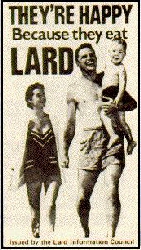
- NPD Group "leading international provider of marketing information...[tracking]
retail and e-commerce sales plus consumer behavior and attitudes"
- Bad Fads
Museum--Look at what Madison Avenue has made us consume
- For further mirth, check out a collection of bad ads at
The Gallery of the Absurd
- Consumerism gotten you down? Check out
Overcoming Consumerism: Citizen-Activist's Anti-consumerism site
- Have a complaint? Place to gripe is eComplaints.com--"a better way to complain"
- Want to see a future tool of retailers to know precisely what button of yours to push?
Check out IBM's BlueEyes software to
determine individuals' physical, emotional or informational states by
analyzing video and audio information. Other
researchers of consumers' minds (and impulses):
-
Links to Consumer Psychology Research
- Ipsos --"features a collection of behavioral tracking products and services that
help clients throughout a broad range of industries learn how to marry
consumers' behaviors with their attitudes."
- The American
Marketing Association
- Public Relations
Society of America Home Page
- International
Advertising Association
- The Institute For Retail Studies
- Advertising Age
- Journal of Material Culture

THE SOCIAL PSYCHOLOGY OF MASS MEDIA


 Return to Social Psychology
Index
Return to Social Psychology
Index
 Here
we will consider the most "macro" dimensions of social psychology, those social
forces arising out of the interactions of large numbers of individuals and
groups which, in turn, are the master templates patterning the cultural and
social orders. One cannot study the behaviors of individuals without devoting
some attention to the broader socio-cultural environments--their economic
structures, stratification orders, technological systems of communication and
transportation, family processes, demographics, and value systems-- structuring
their social lives.
Here
we will consider the most "macro" dimensions of social psychology, those social
forces arising out of the interactions of large numbers of individuals and
groups which, in turn, are the master templates patterning the cultural and
social orders. One cannot study the behaviors of individuals without devoting
some attention to the broader socio-cultural environments--their economic
structures, stratification orders, technological systems of communication and
transportation, family processes, demographics, and value systems-- structuring
their social lives.














 The Rick A. Ross Institute for the Study of Destructive Cults, Controversial Groups and Movements
The Rick A. Ross Institute for the Study of Destructive Cults, Controversial Groups and Movements

 Of all the institutionalized arenas of human activity,
work is the most central, both sociologically and psychologically. From
a macro perspective, work is a way of keeping social actors "out of
mischief" by harnessing and coordinating their energies to produce
socially necessary goods and services. The products of work become the
basis of trade, which brings cultures into contact with each other, thereby
providing opportunities for social innovation.
Of all the institutionalized arenas of human activity,
work is the most central, both sociologically and psychologically. From
a macro perspective, work is a way of keeping social actors "out of
mischief" by harnessing and coordinating their energies to produce
socially necessary goods and services. The products of work become the
basis of trade, which brings cultures into contact with each other, thereby
providing opportunities for social innovation.


